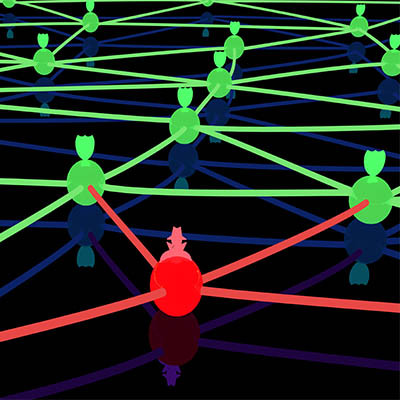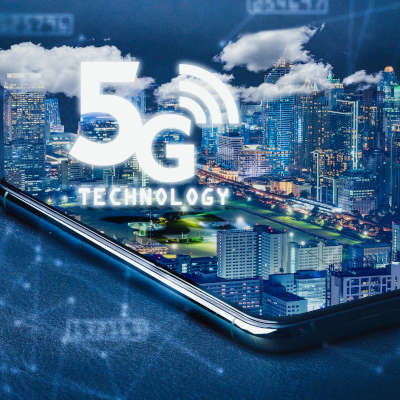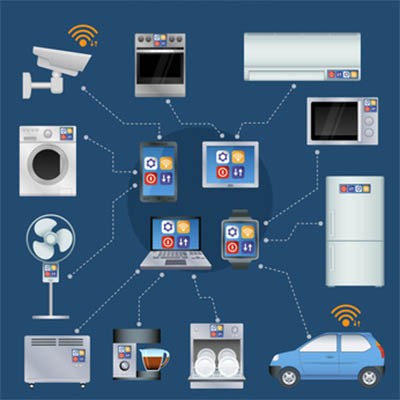Smart devices empower individuals and businesses to redefine the boundaries of connectivity, granting unprecedented control over their homes and offices. With just a tap on a screen, people can adjust their thermostats, secure their front doors, and regulate their energy consumption. The Achilles' heel of these interconnected devices, however, lies in their security.
BNMC Blog
Technology has changed countless aspects of both everyday life and business operations. In today’s blog, we want to share one peculiar aspect of technology development that you might not have considered: infrastructure. How has IT allowed for greater delivery of services and utilities? Let’s explore this topic in greater detail.
The Internet of Things, or IoT, is one aspect of technology that has continued to grow and foster innovation over the past several years. These devices are being integrated into our technology-driven society in previously unimaginable ways, and that includes your business. How might your organization implement IoT devices, and what do they mean for the future?
Baseball is known as America’s national pastime and for over a hundred years it has been shifting along with society. One of the newest trends baseball organizations are using to improve their competitiveness is using data to field their teams, set their lineups, and even set their fielding assignments. Today, we’ll take a look at how baseball uses all this data to improve their product and how you can learn a lot for your own business.
The Internet of Things, a collective term for the countless connected devices out there that have traditionally not been connected to the Internet, is a vast and dangerous territory for businesses to cover, perhaps now more than ever before. Unfortunately, this massive group of connected devices also tends to make itself a target for hackers who want to leverage these devices to their advantage. A recent hack shows just how much hackers can stand to gain from infiltrating these connected devices.
The fifth generation of wireless communications—5G—has been hotly anticipated, already appearing in advertisements for cellular connectivity and set to expand the potential of automated processes. One particularly pertinent application is to the smart devices and services that make up the Internet of Things. Let’s consider where 5G currently stands, and how its capabilities could impact the IoT.
Smart technology has been growing rapidly over the past few years. As a result, there have been many different companies popping up, trying to develop the next “big” thing. With technology becoming a hot button issue all around the world, and with a consumer base that increases by the day, today’s smart technology is seemingly just the tip of the iceberg. Today, we will look at three industries in which smart technologies are making a big impact.
The holidays are a time filled with good food, visits from dear friends and family, and exchanging gifts with those you care about. However, to keep the season bright and merry, you need to be a little cautious during your next gift exchange, as many gifts can present some unexpected risks to your recipient’s security. Be mindful if you see the following items on someone’s wish list.
Computers. Computers Everywhere!
Next time you are walking down the street, stop using your smartphone for a few minutes and watch all the people on the street with you. A good number of them, especially if they are alone, are doing what you were just doing, looking at their smartphone. With so many people tied to their devices, the demand for systems that integrate with these devices is at an all-time high.
While many people are excited to be able to utilize applications to do things they had to do manually just a short time ago, a much bigger change is on the horizon that seems to be something out of science fiction. Some of the greatest science fiction authors of the 20th century have been able to predict the shifts in the relationships that humans have with technology today.
Many of these stories are cautionary tales about not letting technology get too far out in front of humanity. So, what happens when nearly every item that people purchase can be connected to the Internet? It’s not too hard to see scenarios, in a world where everything, not just everyone, is connected can cause potential problems. The fact is that the current Internet of Things technological shift won’t be easy to get out from under if the technology comes off the assembly line as quickly as it seems to be.
Many consumer products are now beginning to be outfitted with what are known as “smart” capabilities. Basically, they can now be accessed from an outside remote, often an app that the user can access with a mobile device such as a smartphone. This shift in computing delivers the first major change toward computing omnipresence and integrates potentially millions of separate functions; resulting in a .
IoT and You
Manufacturers have used an element of market research, namely the drastic increased use of smartphone technology, to justify their expansion into the untested waters of the Internet of Things. In fact, there are plenty of numbers available to justify about any manufacturer of goods to take a look at the potential for profit in creating products that can be connected to the Internet. Cisco did the math and estimates that the Internet of Things creates a $19 trillion market. TechNavio states that over 17 billion “other” devices will be connected to the Internet by 2019; not counting smart TVs, wearable technology, smartphones, PCs, or even connected cars. As a result, the people at Gartner estimate that the services that will likely accompany these devices will come in well over their initial projections, likely exceeding $300 billion by 2020.
For this reason, manufacturers are already producing millions of connected goods, creating a market for goods that won’t take up a lot of bandwidth, but will make the user’s life easier. In these times, any time savings is worth a pretty penny on the open market. The World Economic Forum expects that by 2020, five billion people will have access to the Internet, which is sure to boost demand even further. In fact, the same publication suggests that there will be nearly 35 billion things connected to the Internet by the same year. Here is a graph representing that shift:

It seems as if the ubiquity of our computing systems is an inevitability. Here’s hoping that with computing becoming a growing aspect of humanity, that we, as a civilization, are smart enough to proceed in these untested waters with caution, and to avoid the major problems humans face in the science fiction worlds that were created so very long ago.
Do you think that the Internet of Things and the ubiquitous computing it brings will change change the world for the better? Do you think automation is a good thing or a bad thing for humanity? Share your thoughts in the comments.














